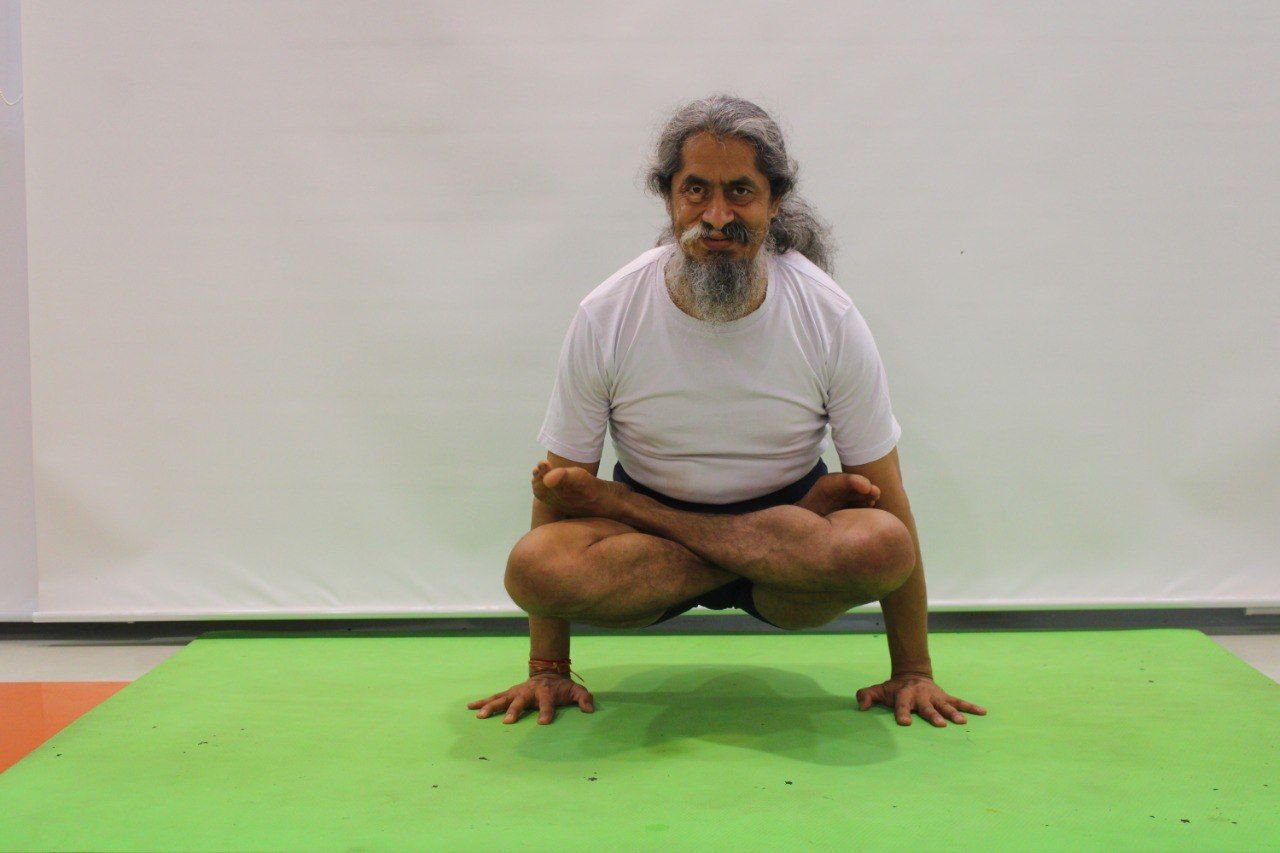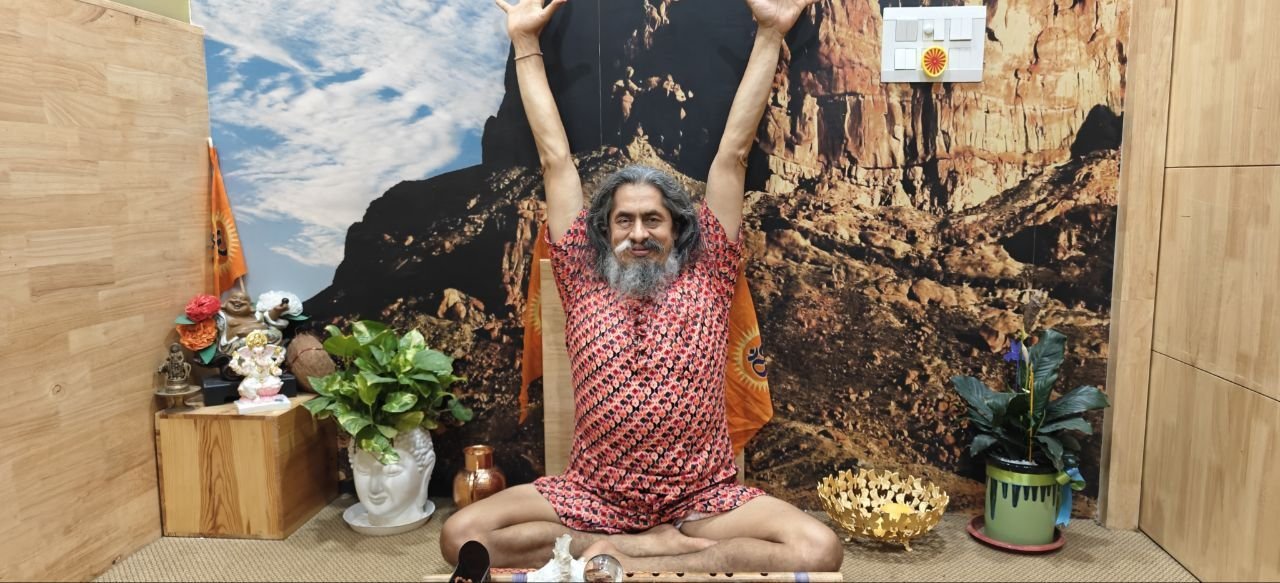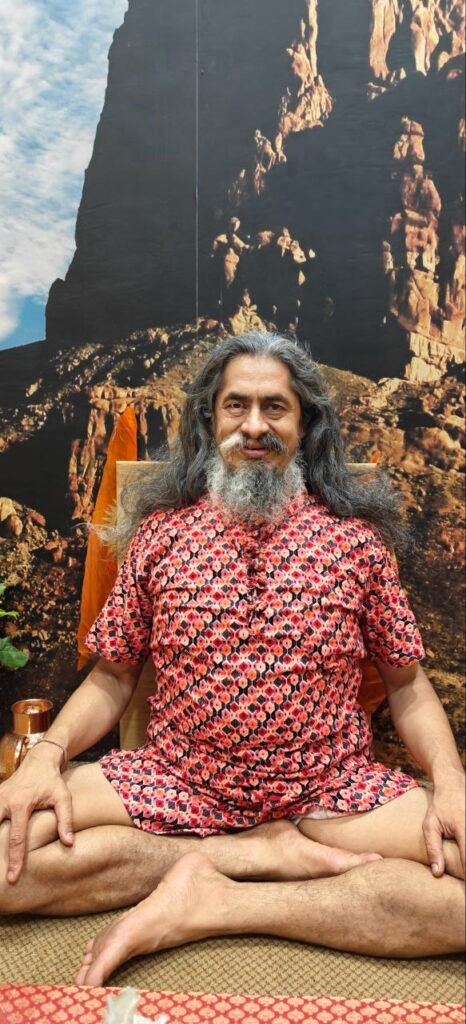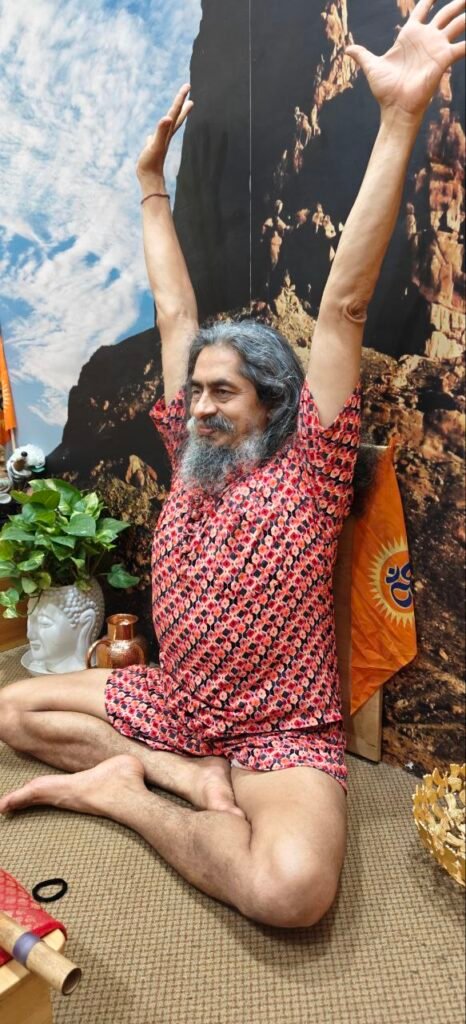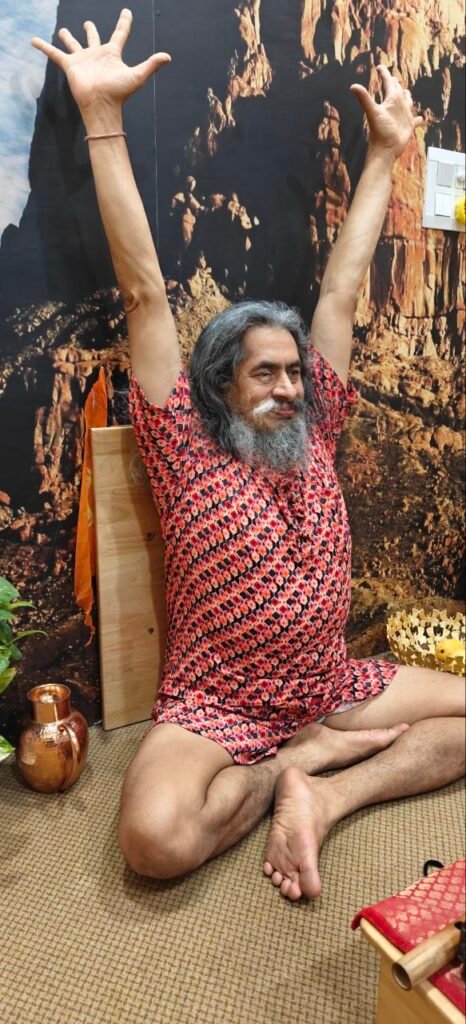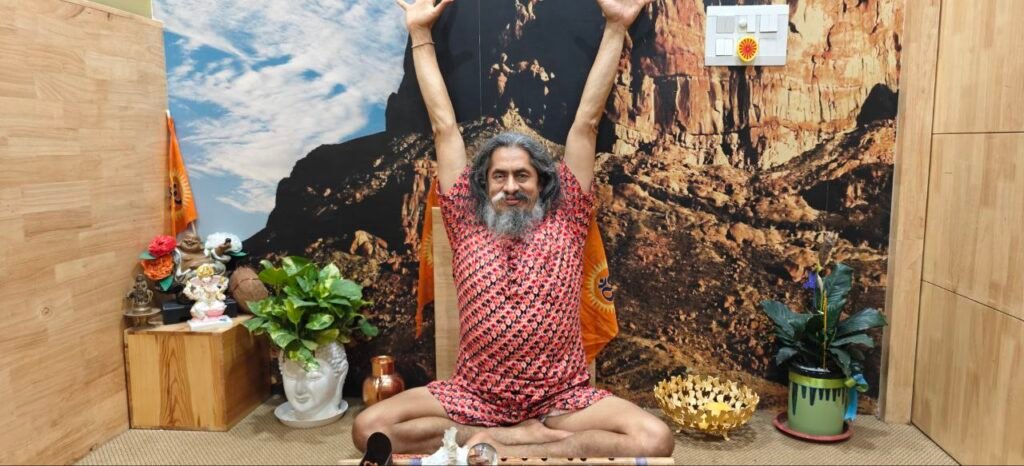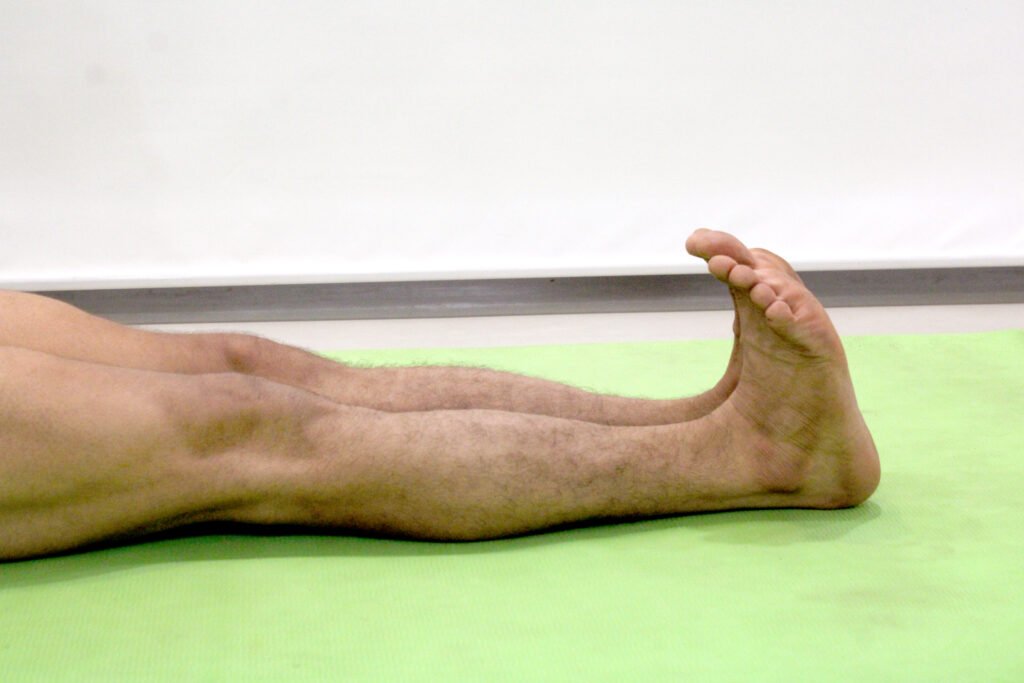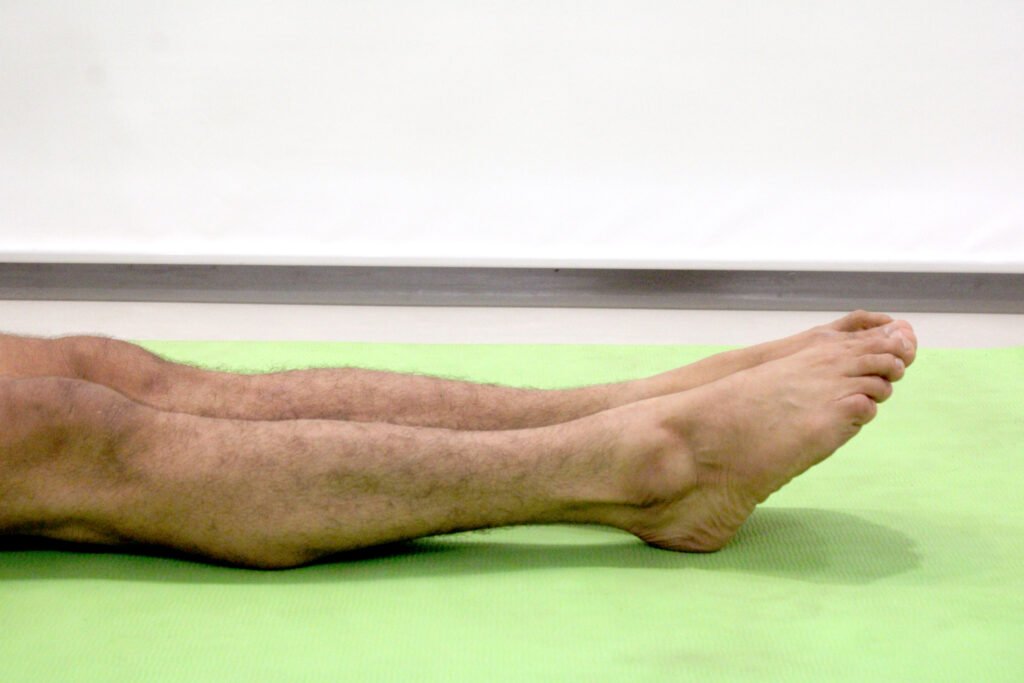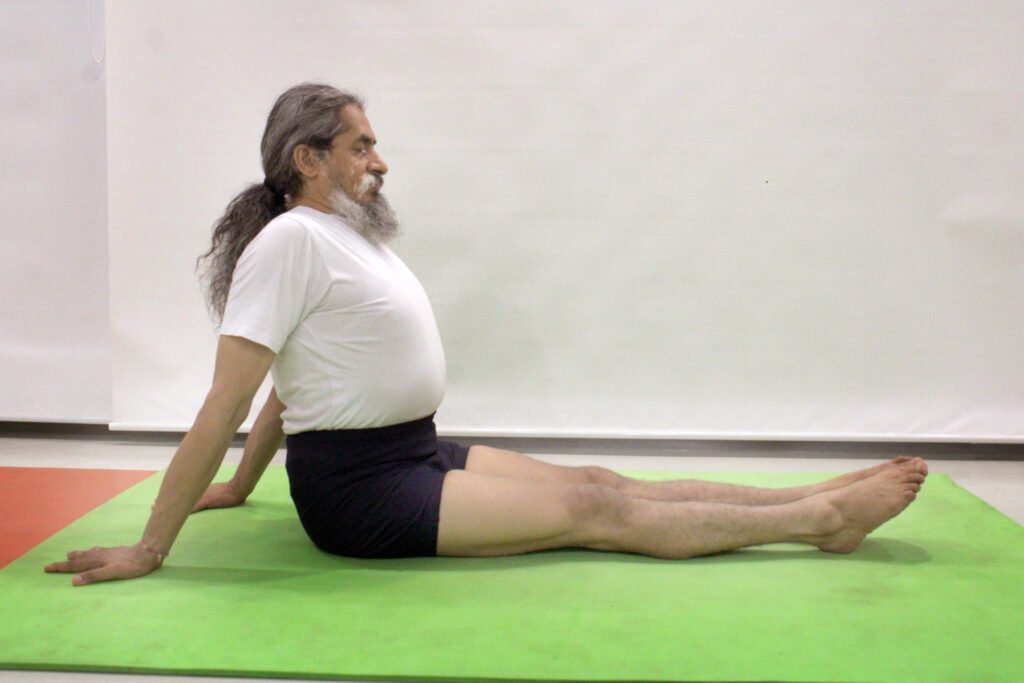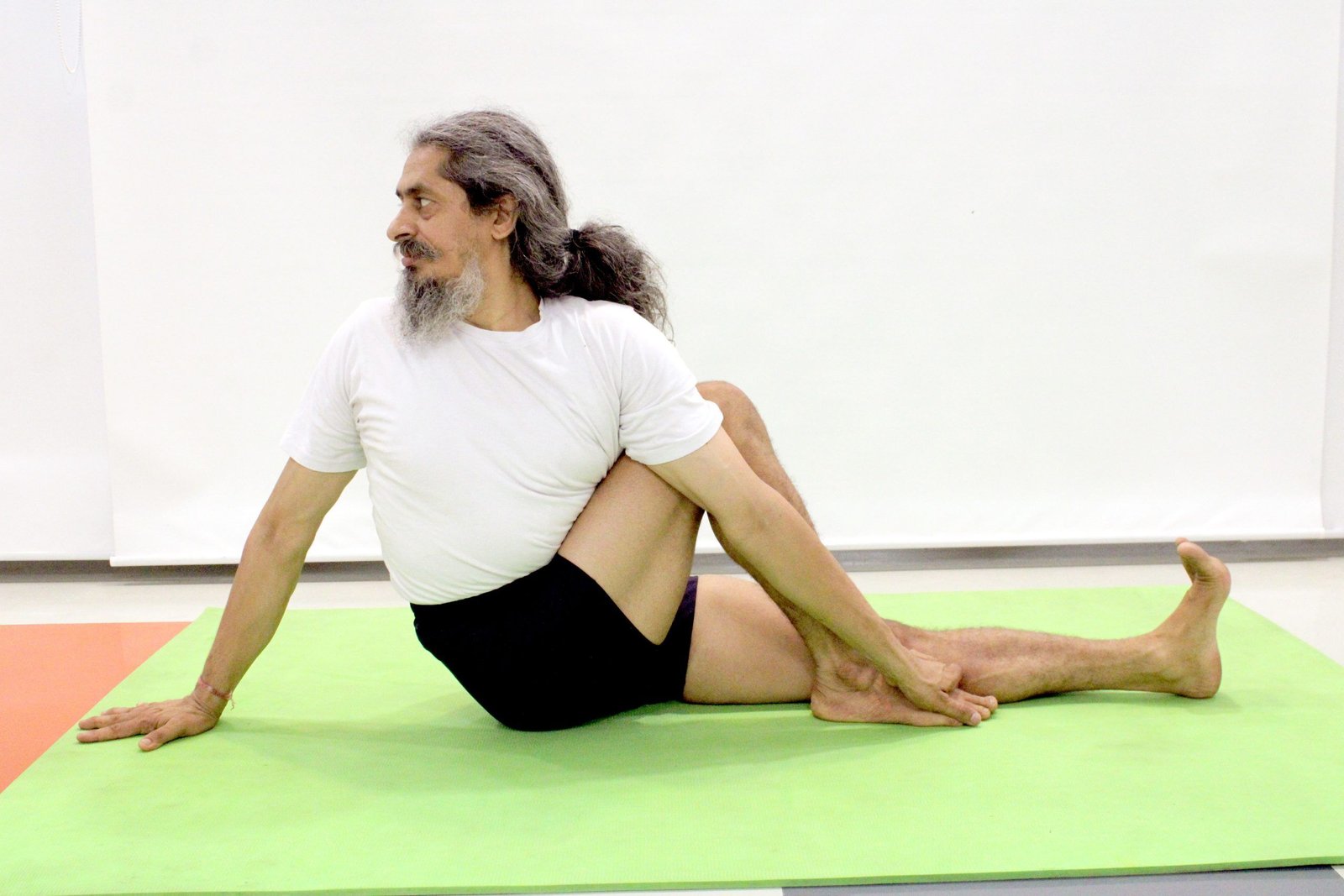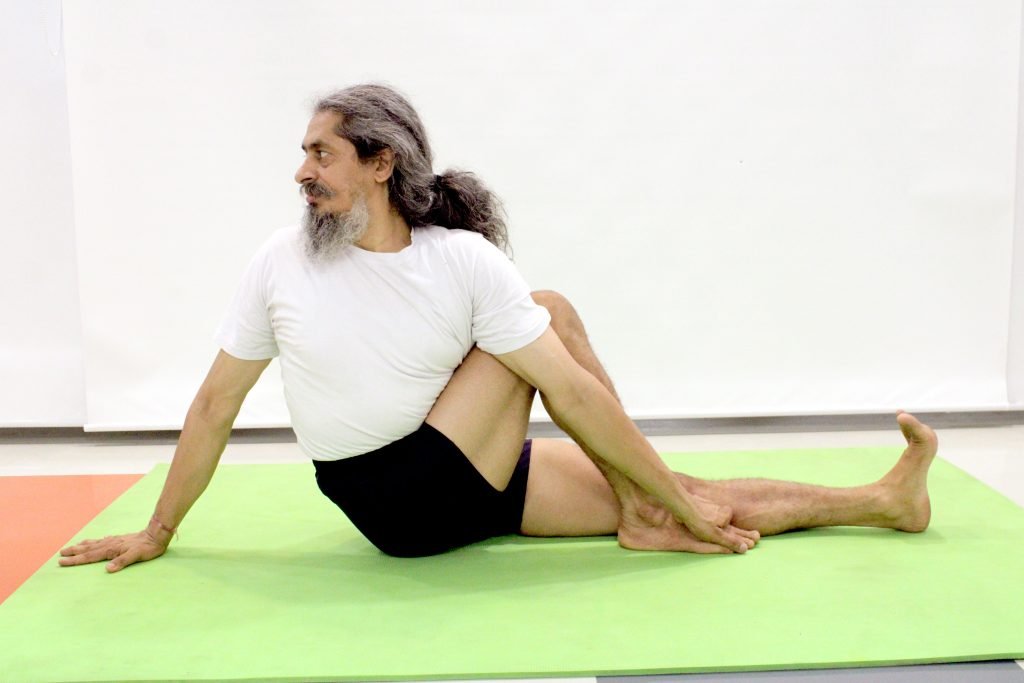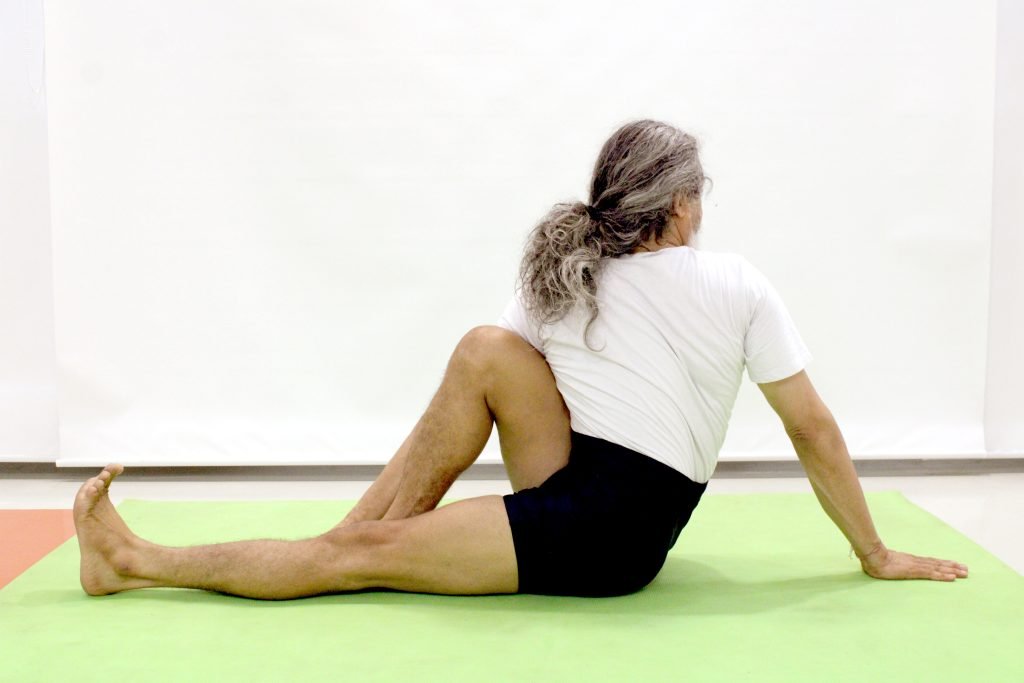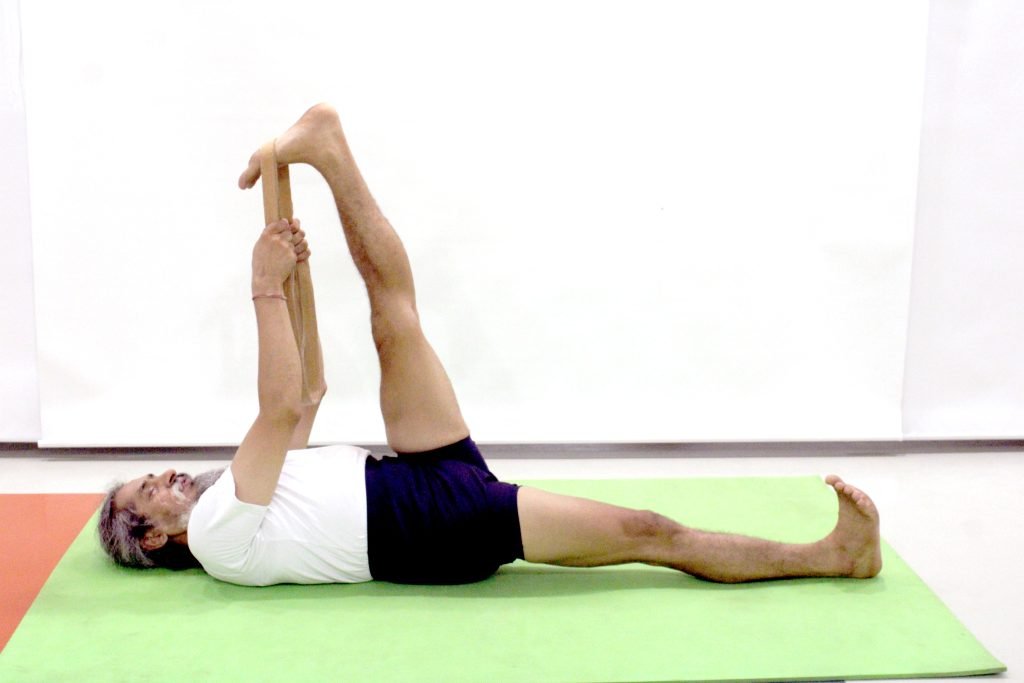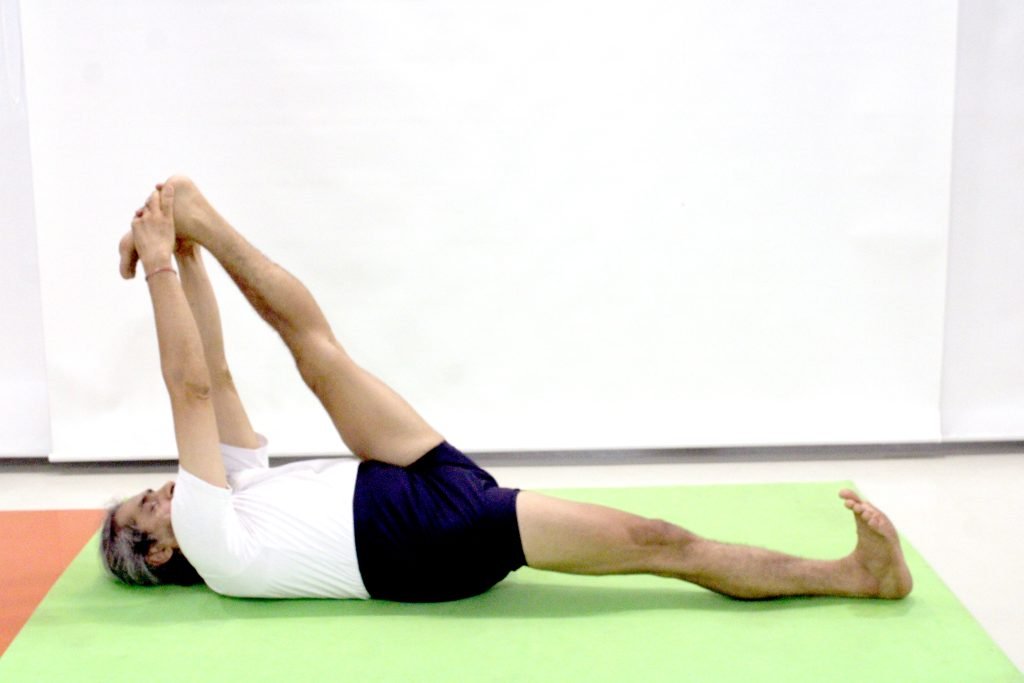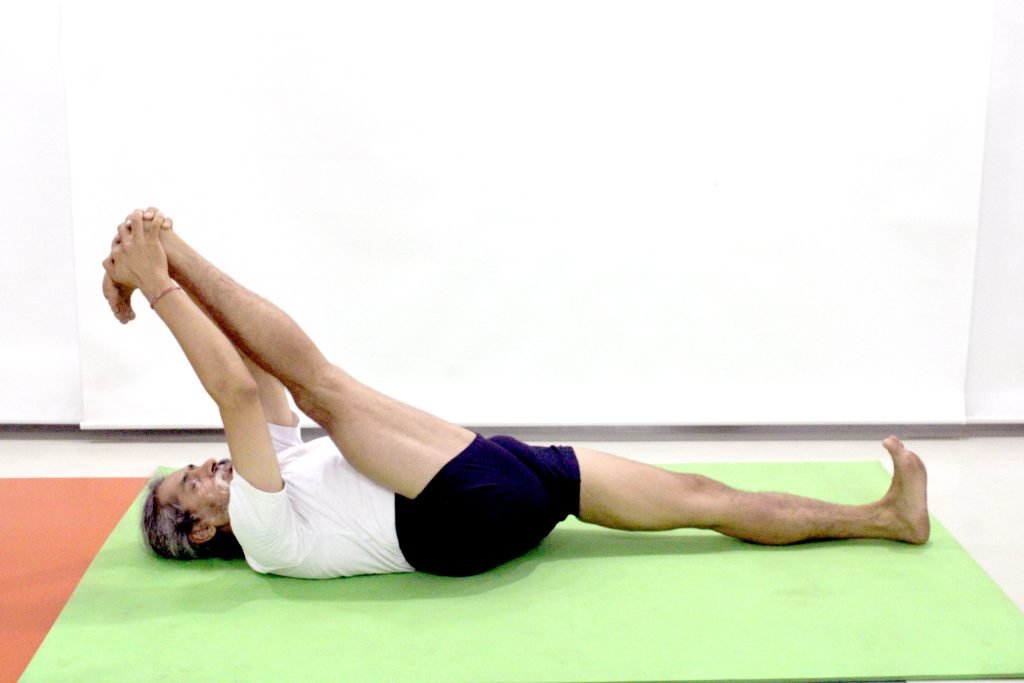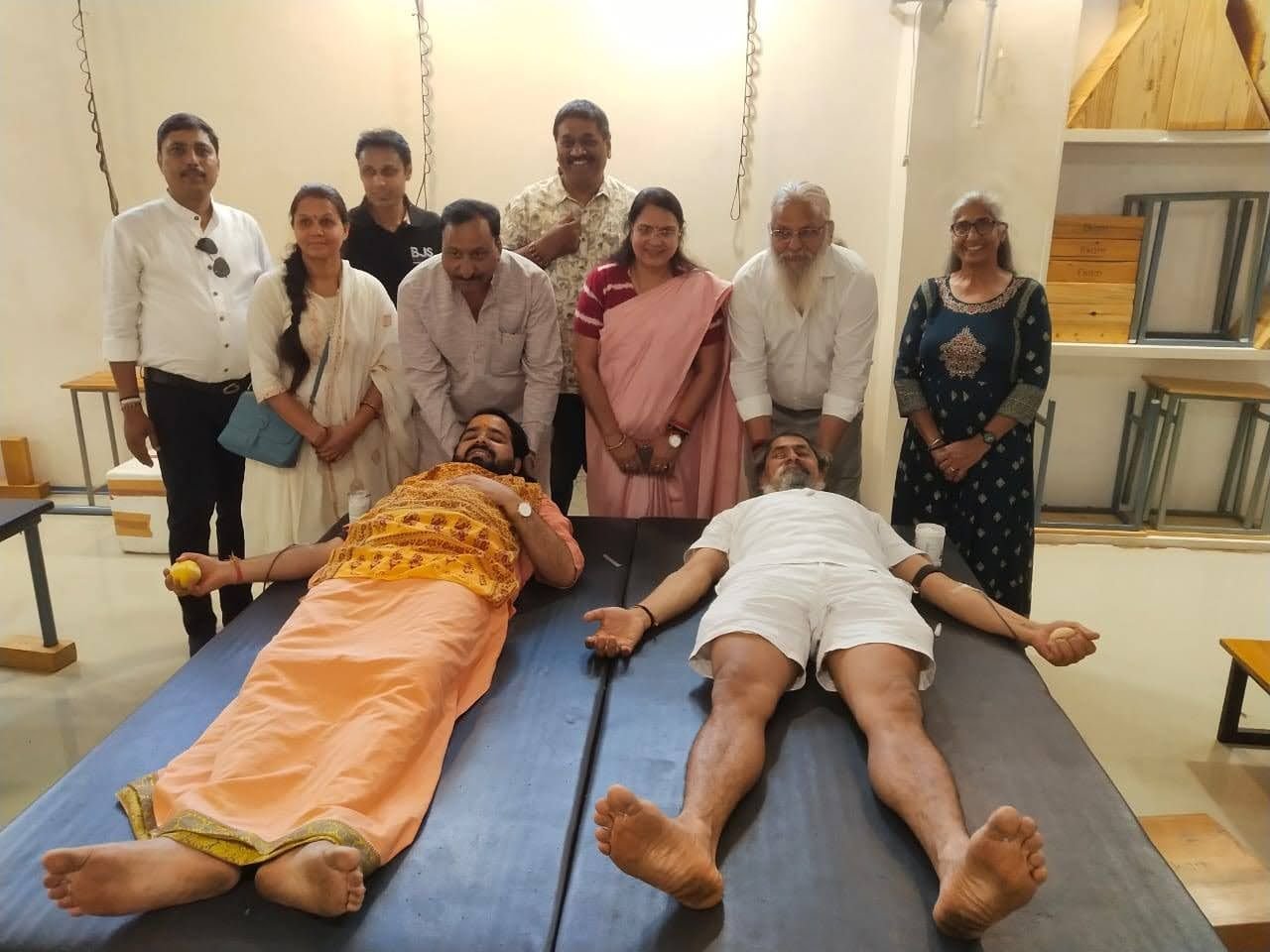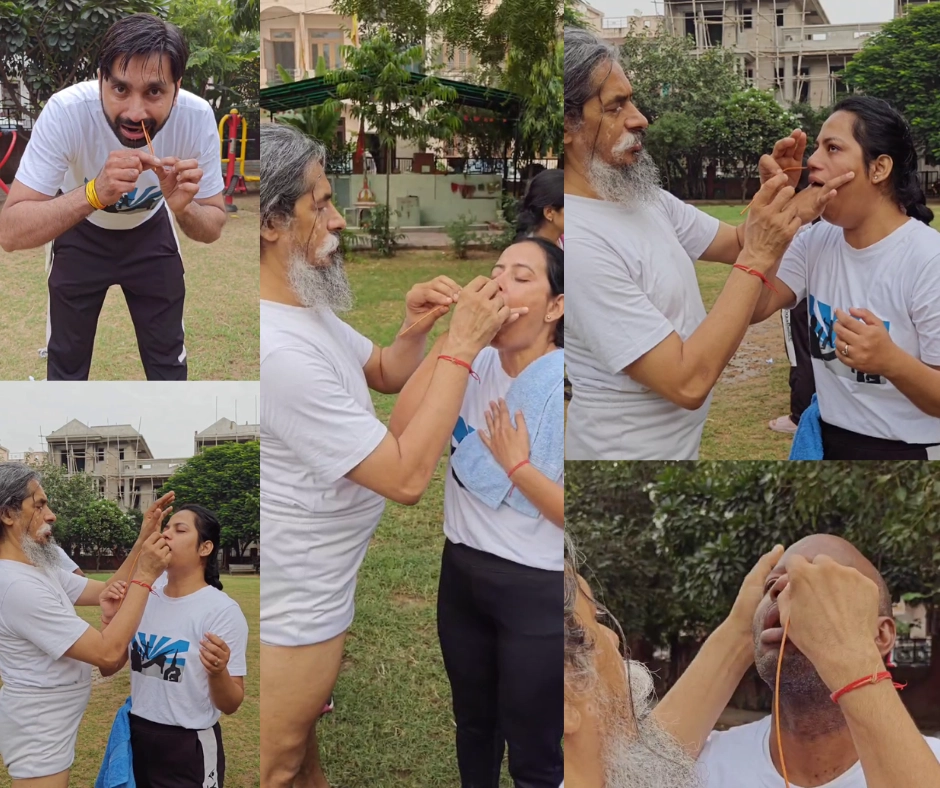Smiling Towards Health – Practice of Uttitha Padmasana
Hari Om!
A warm, smiling greeting to all of you. They say – “Nothing is complete without a smile,” so let’s keep smiling always.
Welcome to our initiative – “A Step from Health to Happiness.”
‘Uttitha’ means “raised” and ‘Padmasana’ means “lotus posture”.
So, Uttitha Padmasana = Raised Lotus Pose
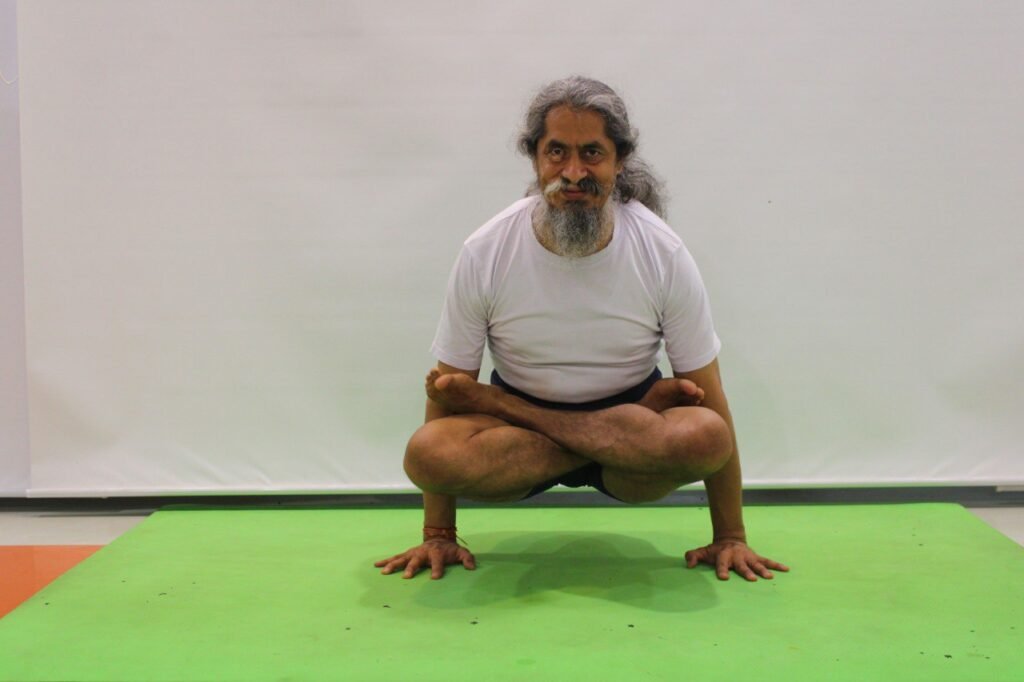
How to Practice:
- Start with Padmasana (Lotus Pose):
- Sit in Dandasana (Staff Pose).
- Fold your right leg and place the heel on the left thigh, close to the navel.
- Then fold the left leg and place the heel on the right thigh, near the navel.
- Hand Placement:
- Place both palms on the ground beside the hips.
- Lift the Body:
- Slowly lift your body upward.
- Keep the spine straight.
- Hips and knees should be parallel to the ground.
- Arms should remain straight, elbows not bent.
- Gaze forward.
- Hold the Position:
- Try to stay in this posture for 30 seconds to 1 minute.
- Lift your body as high as you can—especially hips and knees off the ground.
- Coming Back:
- Gently return to the original sitting position, the same way you entered the posture.
- Close your eyes and observe the changes in your body.
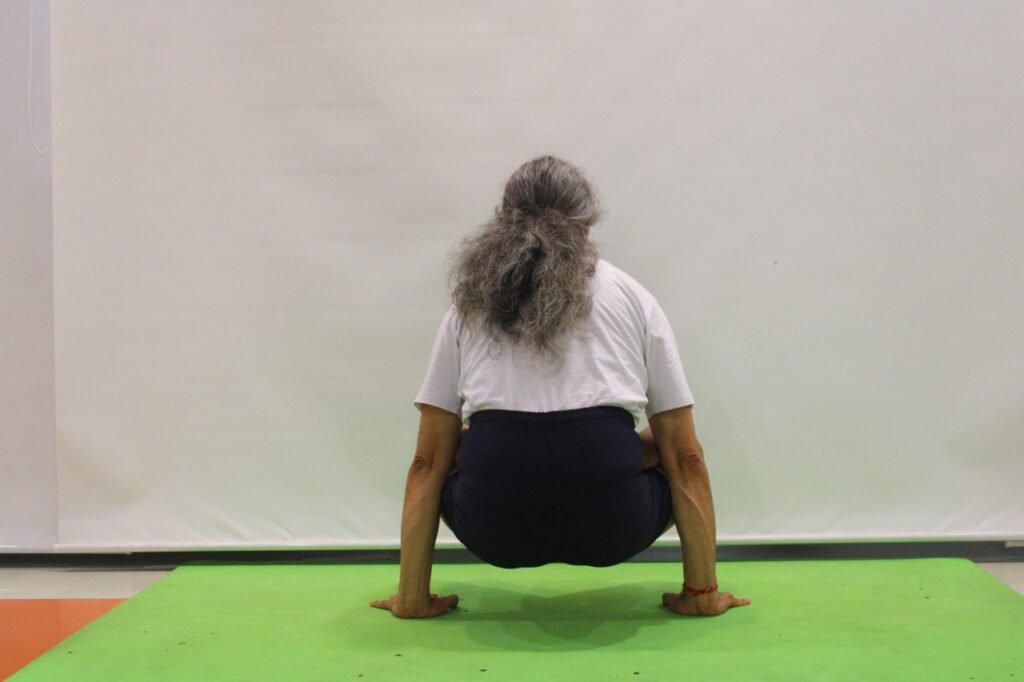
Benefits:
- Strengthens the shoulders.
- Improves flexibility and strength of the spine.
- Tones the abdominal muscles and supports digestion.
If You Can’t Do Padmasana:
- You can also practice this in Sukhasana (Easy Pose).
- You may not lift your legs as high, but the process remains effective.
- If you can’t lift the legs, start by just lifting the hips.
- With consistent practice, your shoulders will gain strength, and the full pose will become easier.
Precautions:
- Pregnant women should avoid this posture.
- Those who have had abdominal surgery should not attempt it.
- Avoid if you have wrist pain or injury.
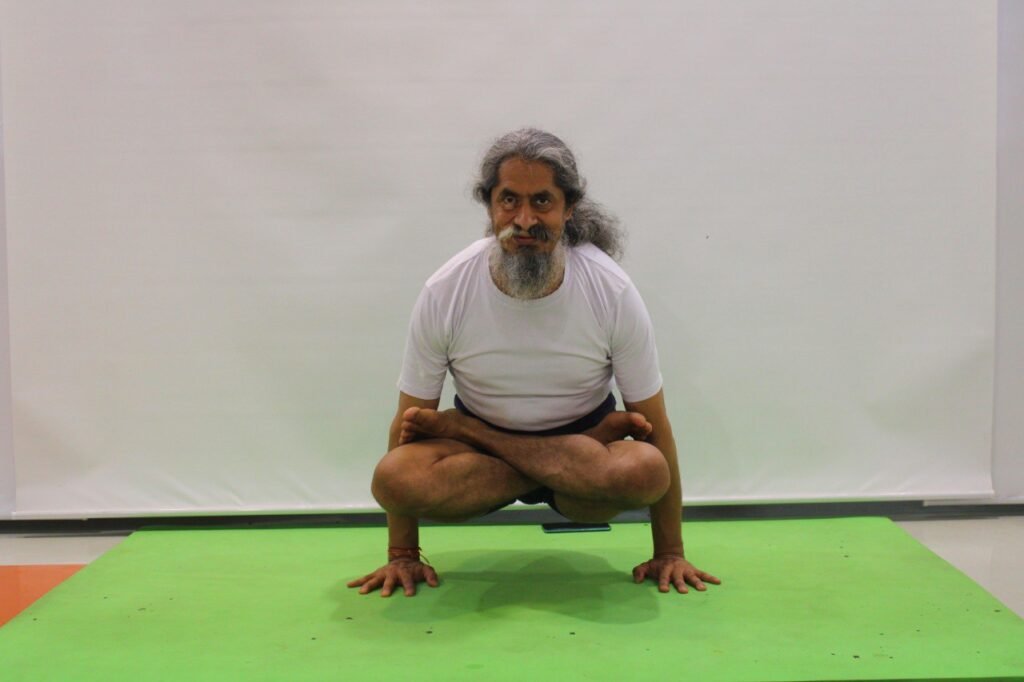
Dear friends,
Continue practicing with us regularly through our blog and enjoy the journey towards good health.
If you find any posture difficult, don’t worry—regular practice will make it possible. Never lose heart.
Stay happy, cheerful, and blissful always.
Thank you for your time and presence.
Yogacharya Dhakaram
Founder – YogaPeace Sansthan

